Year of the Pegasus will bring massive changes to the Hearthstone Core set: 83 cards are removed from the Core set and 89 cards are added to it! Core set cards are free for all players, but they are not permanent. When Blizzard removes cards from the Core set, they are gone. Basically, the Core set cards are loaned to you.
You may also own the original versions of the Core set cards from their original expansions. These cards are yours to keep. While it may be tempting to disenchant some of them when you also have Core set copies available, this year’s massive Core set changes show the risk in that plan. When cards leave Core, you will still have the originals, assuming that you did not disenchant them while they were also in Core.
These huge changes to the Core set will also show up in gameplay. Blizzard is making some major changes to some of the classes, and none are left completely unaffected. Let’s examine what the changes mean for each of the classes.
Death Knight
The rune system has not stood the test of time. There is nothing wrong with the system as such, but the card pool that Blizzard maintains for each individual class is not big enough to properly support it. In recognition of this, Blizzard is removing many rune requirements and making it easier to play with other than triple-rune decks.
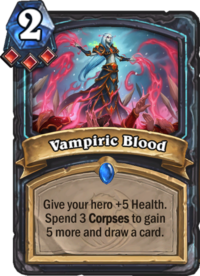
In fact, the only triple-rune cards that remain in Standard are Grave Strength for Unholy, Frostwyrm's Fury for Frost, and Vampiric Blood for Blood. If you go for three of the same rune in Year of the Pegasus, you will trade a lot of potential power for a single card. The cards are strong though, so you may still be willing to make this sacrifice, especially for a Blood control deck.
Many cards are losing their rune requirements altogether, which will make the tradeoff more tolerable. Most of these changes open former Blood cards to other rune combinations: Gnome Muncher, Noxious Cadaver, and Asphyxiate will all become baseline Death Knight cards with no rune requirements.
Some of the former triple-rune cards are also coming down to just two runes: Plagued Grain (Unholy), Marrow Manipulator (Frost), and Soulstealer (Blood) all now require only two runes instead of three.
Death Knight deck-building will change a lot and there are so many new options to pursue. You will still need two Unholy runes to build a Plague Death Knight deck, but you can go for Unholy-Unholy-Frost and still add things like Gnome Muncher into the mix with the new Core set.
The big winner, however, is Rainbow Death Knight. With Frost Strike, Hematurge, and Necrotic Mortician all down to a single rune, Rainbow Death Knight can become an incredible Discover machine that has access to almost everything Death Knight can do. Only the three remaining triple-rune cards that cannot be Discovered are out of their reach.
Death Knight will also suffer some clear losses, as Patchwerk and Lord Marrowgar are leaving the Core set.
I find Death Knight to be the most exciting class when it comes to the Core set changes. The class has a lot to experiment with in Year of the Pegasus!
Demon Hunter
In complete contrast to Death Knight, the Demon Hunter Core set for the next year is largely the same as for this year. The three cards that are leaving – Feast of Souls, Wrathscale Naga, and Flamereaper – hardly saw any play anyway. The most significant replacements are Wayward Sage which gets to stay in the Standard format and Umberwing that used to see play in aggressive Demon Hunter decks.
There are also buffs to Battlefiend to 1/3 stats and Metamorphosis to deal 5 damage, so the new Core set seems to give some more support for aggressive Demon Hunter archetypes. Vicious Slitherspear was supposed to leave Standard, but it is added to the Neutral Core set for the new year, and that is another buff to aggro.
Oh, and there’s also the small matter of Leeroy Jenkins returning to the game which might work well in aggressive Demon Hunter strategies. I did not expect Blizzard to bring such a big Charge minion back to the game, but apparently Leeroy is fine considering the overall power level of the game.
Other than those aggro buffs, Demon Hunter has nothing new going for it in the Core set.
Druid
Looking at the Druid Core set, you might think that Blizzard is removing Ramp from Druid because Wild Growth and Nourish are both going away. Widowbloom Seedsman is also out of Standard with the rotation.
However, Aleco, the Final Design Lead at Hearthstone, explained things a little differently: “Coming into the Year of the Pegasus, our philosophy on ramp in standard is changing a bit. We think Druid should be able to ramp with a restriction on 2 (Splish-Splash Whelp), and ramp with some kind of small upside on 3.”
Druid gets ramp with an upside in the form of Malfurion's Gift, which will give the option to choose a two-mana Wild Growth after the rotation. There may also be more ramp cards in the new expansion. So, in the end, Druid’s ramping ways will hardly change.
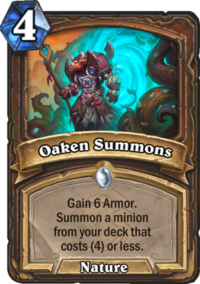
Other than ramp being different, but the same, Druid gets some sweet mid-game utility back in the new Core set. Oaken Summons is returning to Standard, and it is a card that has proven itself time and again and still sees play in Wild. Swipe is also coming back at three mana, and that gives Druid some early area-of-effect damage and a piece of a potential finisher with the new Spell Damage Mini from the new expansion.
I also look forward to Greybough coming to the Core set. It is a rare win condition that will be available to everyone for free, but whether a token deck that can really make use of it is viable remains to be seen. I expect it to be a bit slow for today’s Hearthstone, but it could be one of the better cards in a new player’s collection.
Hunter
Hunter will have a lot of soul searching ahead. Arcane Hunter is rotating out. The Core set changes will remove Doggie Biscuit, Selective Breeder, and King Krush, alongside two strong Secrets, Cat Trick and Wandering Monster.
That takes away most things Hunters like to do. Arcane damage. Buffing up their aggressive minions. Discovering copies of things from their deck. King Krush. What can the class even do from here?
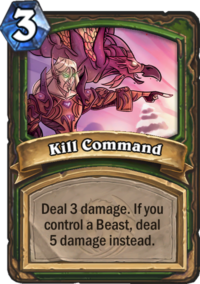
Well, the Core set takes away, but the Core set also gives. Secrets are core to Hunter’s new identity. While two good secrets leave, they are replaced by Rat Trap and Ice Trap, which are fine cards as well. Blizzard also adds Lesser Emerald Spellstone to the mix, and when you remember that Starstrung Bow still remains in Standard, Hunter’s direction becomes more clear. Add Barak Kodobane and Kill Command to the mix as new additions to the Core set, and we have the makings of an aggressive Secret Hunter deck. A deck that can also run Leeroy Jenkins because who wouldn’t?
Slower Hunter archetype will need support from the expansions. The Core set wants to end things in the mid-game at the latest.
Mage
Mage loses some fine tools, and gains different tools that do the same thing in return.
Fire Sale is going away. It has been a strong board clear card, and its replacement, Flamestrike, is much more expensive, so Mage definitely loses in this exchange.
The departure of Aegwynn, the Guardian removes some of Mage’s lethality, and the loss of Pyroblast removes some of Prison of Yogg-Saron‘s lethality. However, the replacements here are solid. Frostbolt is a great card, as is Primordial Glyph. Kalecgos returns in a buffed form that costs only eight mana.
There is no big fundamental change to Mage in the new Core set. Everything that Mage loses is replaced with a similar, albeit somewhat different, capability.
Paladin
Paladin will maintain its focus on buffing its minions, even more so with the addition of Spikeridged Steed and Lady Liadrin to the Core set. Paladin also gets Hammer of the Naaru back. All three cards were stars of their era, so this looks like a powerful Core set for Paladin.
Lady Liadrin was most famous for her interaction with Librams, especially Libram of Wisdom and Libram of Hope. Gaining a full hand of discounted Librams from Lady Liadrin could end games on the spot. Paladin does not have that same level of instant power available in the current Standard format, but Spikeridged Steed is a big step into that direction. Liadrin will be much slower than before though without discounted spells.
Priest
The era of Shadow Priest has come to an end again. Darkbishop Benedictus was added to the Core set one year ago to extend the lifespan of the archetype by an additional year, but now he is leaving and he is taking Shadowed Spirit with him. If there will be aggressive Priest archetypes in Year of the Pegasus, they will have to find their power elsewhere.
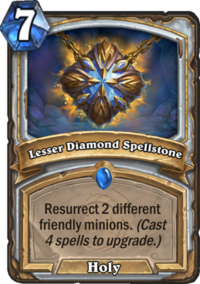
Another notable leaving card is Shard of the Naaru. Shard of the Naaru is perhaps the most powerful silence effect ever printed in Hearthstone, and now this cheap and strong effect will be unavailable to Priest.
Priest is getting back some of its iconic powerhouses in return. Lesser Diamond Spellstone and Obsidian Statue instill fear in older Hearthstone players. Resurrect Priest was infamous and sometimes an infuriating experience to play against. Wall after wall rises, and resistance is futile. Or was. Hearthstone is not that game anymore, and the cards look slow for the current meta. We have already seen how aggressive decks have received buffs and have managed to hold on to some of their strong cards by having them included in the Core set, so how can a slow Priest deck survive that onslaught. I am not convinced that these will become playable cards, especially at higher ranks.
Rogue
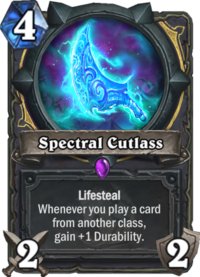
Rogue gets an interesting Core set update for the new year. The Secret package is out. Shadowjeweler Hanar and the Rogue Secrets retire to Wild once again. Shadowstep, on the other hand, is not going anywhere. Everything in the new Core set just softly whispers, Leeroy. It will be fascinating to see if any of these old tricks are still playable, especially early in the year when the card pool is smaller.
As for the new stuff, the one card that truly scares me is Spectral Cutlass. Thief Rogue is a thing, and Cutlass is one of its iconic tools. I think it will be too slow, but if it works, it will change things. Rogue that lasts, that heals, that plays a long game.
Everything Rogue gets is scary. Sap, Raiding Party, Fal'dorei Strider, and Flik Skyshiv all saw top-tier meta play back in their day. Pirate Rogue with weapons is not an impossible concept at all, even more so with Southsea Deckhand also returning to the Core set.
Shaman
Shaman is a class that seems to be perpetually looking for its identity. Totems, Overload, Evolve, Elementals, Damage spells, Doomhammer, and tokens with Bloodlust, these are just rotated in an endless cycle.
This time, the cycle is rotating Grand Totem Eys'or, Bloodlust, and Doomhammer out of the Standard format, while keeping Muck Pools in and adding some more Elemental support in the form of Kalimos, Primal Lord. Fire Fly also gives great support for Elemental decks.
Year of the Pegasus Shaman will be Evolve and Elementals, then? Maybe with a sprinkle of spell damage included as Spirit Claws and Wrath of Air Totem also return. If you enjoyed trying to get that 25% roll for spell damage, this is the Core set for you.
Warlock
In addition to Death Knight, the Warlock set excites me. The big Demon package is going away, so there will be no more Voidcaller or Mal'Ganis, but we are getting something much more iconic in return. We are getting Handlock back!
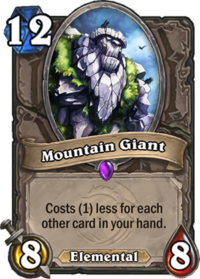
Dark Alley Pact returns in a buffed state that includes Taunt for the summoned minion, and Mountain Giant and Molten Giant are both added back to the Core set. I do not know if I dare to try Molten Giants in modern Hearthstone, as getting your Health that low could spell instant disaster. But I am so ready to build a huge hand and summon some impressive big minions for four mana!
Warlock is also getting its own iconic Charge minion back, as Doomguard returns to Standard. Leeroy Jenkins or Doomguard? Is this a year 2014 Zoo deck we are talking about?
Warlock also gets Arch-Villain Rafaam. I don’t think Rafaam will be a competitive card in the current game. However, it can be nice for newer players to get to play with some fancy cards. On lower ranks, I can see that bringing some fun experiences. That said, meta decks go quite deep nowadays, and it can be hard to find room to play with fun things. At least there are always bots?
Warrior
Taunt Warrior has been disappointing time and again. Either it does not work at all, or it is mediocre and boring. Therefore, I am glad that Armagedillo is leaving the Standard format, as I hope this indicates that Blizzard is done with Taunt Warrior for the time being.
Sword Eater is the biggest loss Warrior endures in the Core set rotation. It is such an incredibly flexible card that hits the balance of power just right. Strong, but not too strong. A lovely design, and still available in Wild, of course.
Warrior also gets to keep its location through the Core set, as Sanguine Depths is added to Core. Town Crier as a one-mana cantrip that draws a card and Fiery War Axe in its original two-mana form are fine additions. Nothing too exciting, just support pieces, but good support pieces to build upon.
More Powerful Neutrals
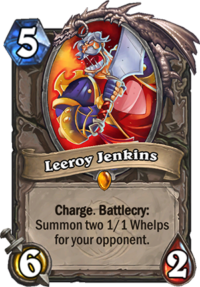
I mentioned several Neutral cards that are added to the Core set already: Leeroy Jenkins, Vicious Slitherspear, Southsea Deckhand, Mountain Giant, and Molten Giant. However, these are only a small glimpse of the added Neutral power.
The additions are quite spectacular, really. Wandmaker can do great things with a limited card pool. Big Game Hunter is buffed by making it Tradeable. Mind Control Tech comes back and you can now choose its target. Justicar Trueheart returns to give you upgraded Hero Powers, and she is now cheaper and sturdier as a five-mana 6/4. The original Alexstrasza and Sylvanas Windrunner come back. Ysera comes back and now gives you two Dream cards per turn.
Finally, there are four brand-new cards in the Core set. These are in the game to cross-promote Warcraft Rumble, Blizzard’s tower defense / tower attack mobile game, and some of them are pretty good! Footman and Warsong Grunt do not impress me much, but Gnomelia, S.A.F.E. Pilot and Night Elf Huntress looks like real cards that can see play.
The Most Powerful Core Set Ever!
Overall, the result of the changes is the most powerful Core set ever.
Aleco describes the set on Twitter as follows: “Our #1 goal for this year’s core set was to celebrate 10 awesome years of Hearthstone. In order to do this, we really tried to push our boundaries by reaching for some of the most iconic cards in Hearthstone history – including ones from the Hall of Fame!”
There are so many iconic cards coming back to Standard. The big question is how have they stood the test of time. The power level of the game is something completely different than it was in 2014. However, many of these cards saw play in top-tier decks and even defined those decks. They may still have something to contribute even today. If all else fails, several of them have Charge, which is a keyword Blizzard has used sparingly over the past years.
Death Knight, Rogue, and Warlock are getting the most interesting things, but the strong pool of Neutral cards ensures that every class has something to look forward to. It will also be interesting to see if there are enough tools to build a deck from Core set cards alone. There are some spicy win conditions there, so it just might work. This is going to be a good Core set for all players.

Great analisys. We will see how strong Core Set will be. (I’m a lite worry about it) ????